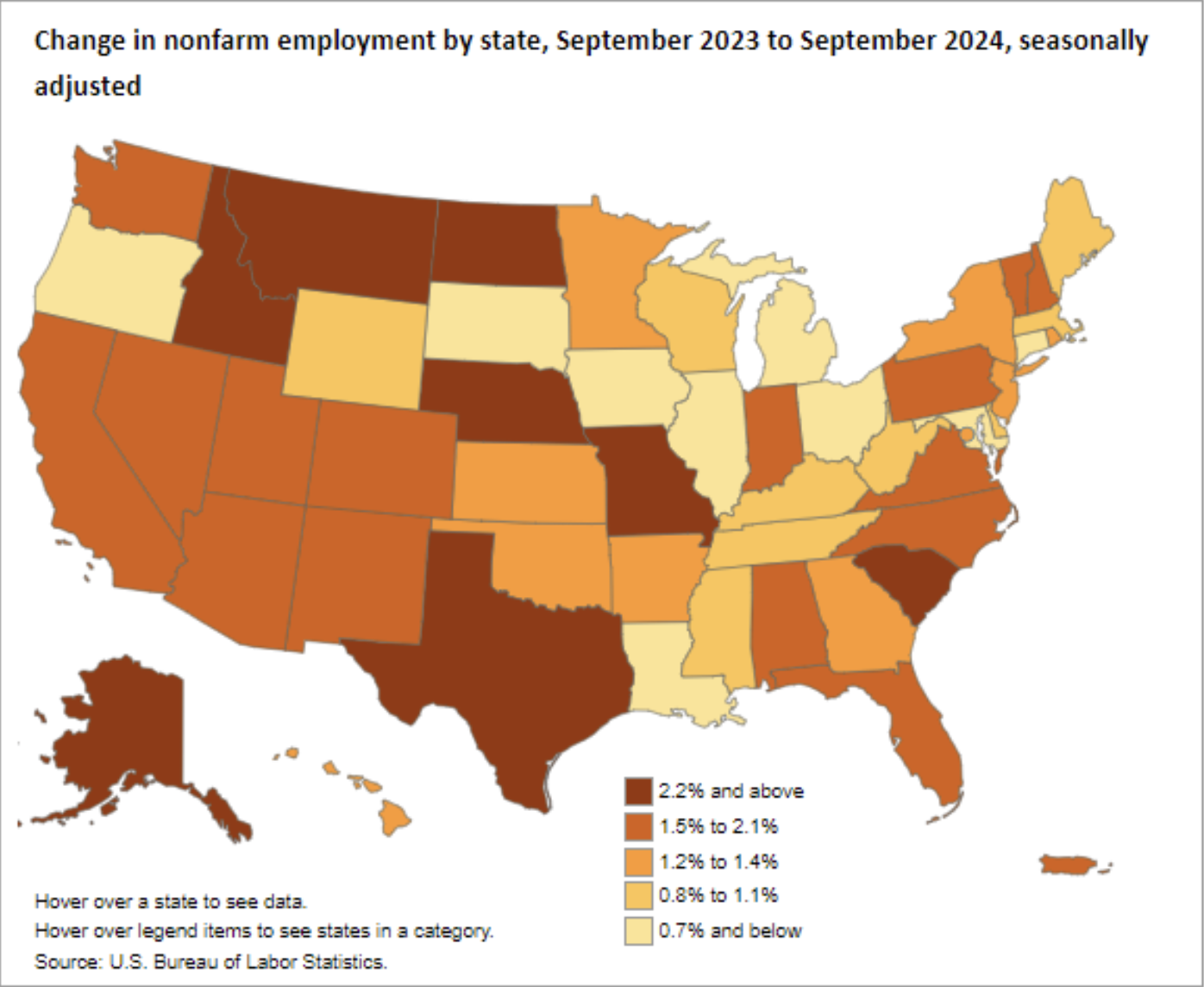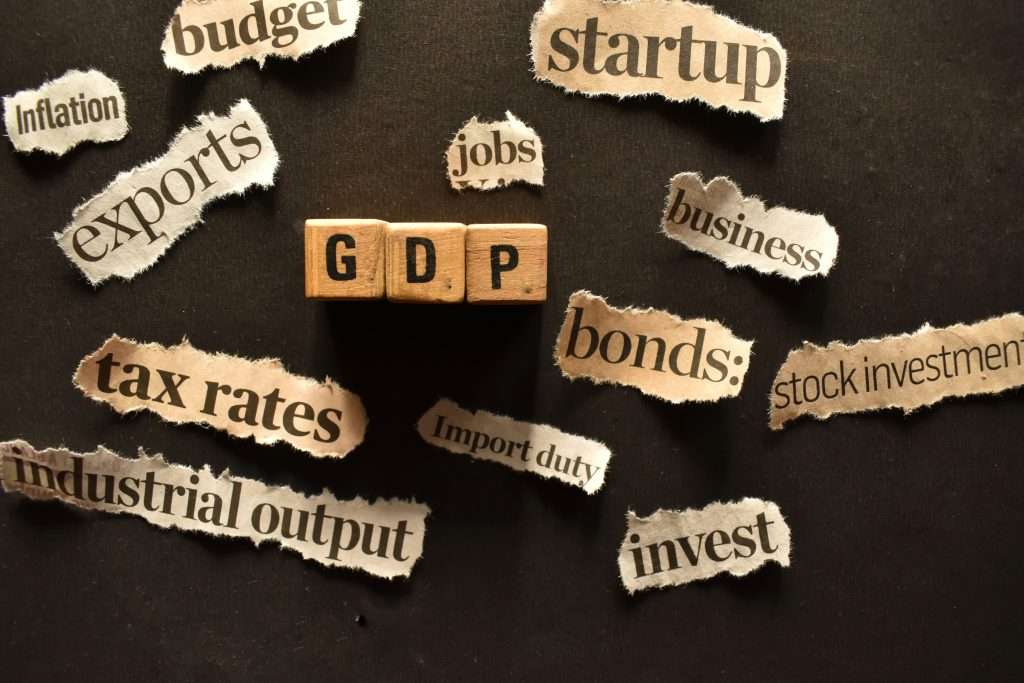Kansas has long been a critical player in the Heartland, but its recent job performance reveals progress and potential pitfalls.
As of September 2024, Kansas’ unemployment rate sits at 3.3%, up from 2.6% the prior year, signaling a tightening labor market despite steady job growth. Over the last twelve months, Kansas added around 19,000 jobs, reflecting a 1.3% increase in nonfarm employment.
While this growth is commendable, it lags behind the national average of 1.6% and the state’s regional peers, such as Missouri (2.9%) and Nebraska (2.2%).

Kansas is at a crossroads.
Although its policies have produced moderate gains, the state must embrace more aggressive, pro-growth reforms to remain competitive. By examining neighboring states and successful models like Texas and others, Kansas can chart a path toward stronger economic growth, job creation, and greater prosperity.
How Kansas Compares
Compared to its neighbors, Kansas’ job creation numbers show mixed results.
Missouri, for instance, has been more aggressive in attracting business investment, contributing to a lower unemployment rate and faster job growth. Nebraska’s low unemployment and focus on maintaining a favorable tax climate have made it a regional standout.
Kansas’ employment growth rate of 1.3% over the past year is notably slower than Texas’s, which added 327,400 jobs (a 2.3% increase) over the same period, with an unemployment rate of 4.1%. While the one percentage point difference in annual job growth between the two states may not seem like a lot, each percent matters when considering how long it takes employment to double. The rule of 72 calculates how long a percent will double by taking 72 divided by that percent. So, the 2.3% in Texas would double employment every 31 years, while the 1.3% in Kansas would take 55 years to double.
While the unemployment rate is lower in Kansas than in Texas, the labor force participation rate–the share of people working or looking for work–has been declining in Kansas while increasing in Texas in recent months. When people leave the labor force, this can artificially reduce the unemployment rate as fewer people are working or looking for work and likely end up on safety net programs, reducing economic output.
This comparison highlights Kansas’s room to grow, particularly given its rising unemployment rate over the last several months.
Pro-Growth Policies for Kansas
To ignite its economic potential, Kansas should prioritize a suite of pro-growth policies aimed at boosting private sector investment, reducing the tax burden, and unleashing the full potential of its workforce. Here are a few strategies Kansas could adopt:
- Lowering Taxes: One of the main factors driving businesses to states like Texas is their low-tax environment. Kansas should reduce income and corporate taxes to make it more attractive for businesses and skilled workers. A comprehensive tax overhaul that shifts away from taxing income and toward more consumption-based taxes would align Kansas with the most competitive states in the nation. The tax changes from the 2024 Special Session of the legislature should be viewed as a starting point, not the end game. Those changes allowed Kansas to keep treading water and not make true progress.
- Deregulation: Excessive regulations stifle entrepreneurship and limit business expansion. Kansas can create a more business-friendly environment by cutting red tape and streamlining licensing processes. Texas has long prioritized regulatory reform, contributing to its economic success. Kansas could follow suit by reviewing and removing outdated or overly burdensome regulations, especially in the manufacturing and technology sectors.
- Universal School Choice: Expanding access to high-quality education through universal school choice would be one of the best long-term investments in Kansas’ future. As seen in other states, providing parents with the freedom to choose the best educational environment for their children fosters competition and improves outcomes across the board. This could help Kansas build a more dynamic workforce, ensuring students are better prepared for high-paying jobs.
- Spending Restraint: Kansas must keep its budget in check to avoid over-reliance on government intervention in the economy. By implementing spending caps tied to population growth and inflation, Kansas can ensure that the government lives within its means, reducing the need for future tax increases and creating a better business climate.
Looking Forward
Kansas has all the tools to succeed: a strong agricultural base, a growing manufacturing sector, and a skilled workforce. However, without significant policy changes, it risks falling behind its neighbors and losing out on potential economic gains. By focusing on tax cuts, deregulation, education reform, and responsible government spending, Kansas can attract more businesses, create jobs, and set itself on a course for long-term prosperity.





